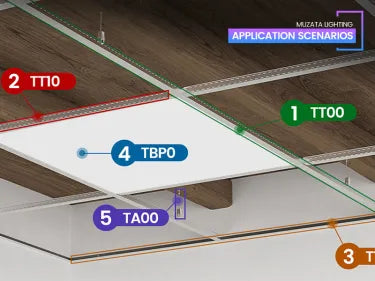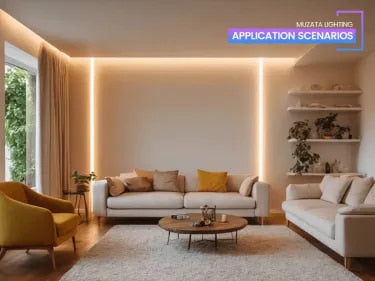TABLE OF CONTENTS
Lighting 101: LED Lights VS Incandescent Lamp
When you put your hand on the shopping cart and hesitate. LED Light flashes with a high-tech glow, while old-fashioned incandescent lights radiate a familiar warmth. How do you choose? Who shines brightest, the old guard or the new guard, in terms of cost, durability, and environmental friendliness?

First, let's look at some key specifications to understand the science behind these popular lights:
1、Luminous efficiency
Luminous efficiency (lm/W) measures how much visible light is produced per watt of electricity consumed. The higher the lumens/watt, the more efficient the light source is at converting energy into light.
2、Color Rendering Index
Color Rendering Index (CRI) indicates how accurately a light source displays colors from 0-100. Higher CRI values mean more realistic color rendering.
3、Color Temperature
Color temperature (Kelvin) depicts light from warm to cool tones. Under 3000K is warm light, 3000K-5000K is neutral, and over 5000K is cool light. Different color temperatures create different ambiances.

Next, let's take our understanding of these parameters and look at how the specific attributes of LED and Incandescent compare:

Cost and Safety: As we can see from the table, LEDs are more expensive. But compared to incandescent bulbs, which burn out in 1,000-2,000 hours, their 50,000-hour lifespan provides long-term savings. According to the Department of Energy, LEDs last 20-25 times longer than incandescent bulbs! That means decades of lighting without replacing LED bulbs.
In addition, LED lighting produces very little heat compared to incandescent bulbs, which waste energy in the form of heat. This makes LED light fixtures safer and reduces air conditioning costs in the summer.

The Softer, Eye-Friendly Light: Some people worry that LED lights look too harsh or artificial. But today's LED technology has come a long way in reproducing warm, natural light. LEDs now have a color rendering index (CRI) of 80-90, compared to incandescent lamps' lower CRI of 60-80, which means that LEDs are able to reproduce colors more accurately and realistically. From a softly lit living room to a brightly lit workspace, LEDs create the perfect light environment.
LEDs also emit a soft, even light that is evenly distributed throughout the room. Incandescent bulbs, meanwhile, emit an uncomfortably bright glare. As a result, LED lights are more comfortable for the eyes during long periods of reading or task work.

Advanced features for LEDs
- Voice Control: According to a Statista survey, more than 100 million U.S. households will have intelligent voice assistant devices by 2021, with high demand for voice-controlled smart homes.
- Automation Features: Juniper Research expects sales of LED fixtures equipped with auto-dimming light sensors to account for more than 60% of the U.S. LED light market by 2023.
- Scene Mode Setting: Signify research shows that more than 85% of users expect LED fixtures to offer multiple scene lighting modes.
- Dimming Functions:Energy.gov shows data that using LED dimming can help homes save up to 50% on lighting electricity.
- Energy Savings Optimization: ESA reports that smart LED lighting can help commercial buildings reduce their lighting by up to 80% per year.
Conclusion: LED Wins🚩
When weighed against the key factors of efficiency, cost, lifetime, and light quality, LEDs are the clear winner. As LED technology continues to advance, it's only going to get brighter. So, for the sake of your wallet and your eyes, eliminate your old, expensive light bulbs and replace them with innovative LED lights. make your home brighter than ever!




